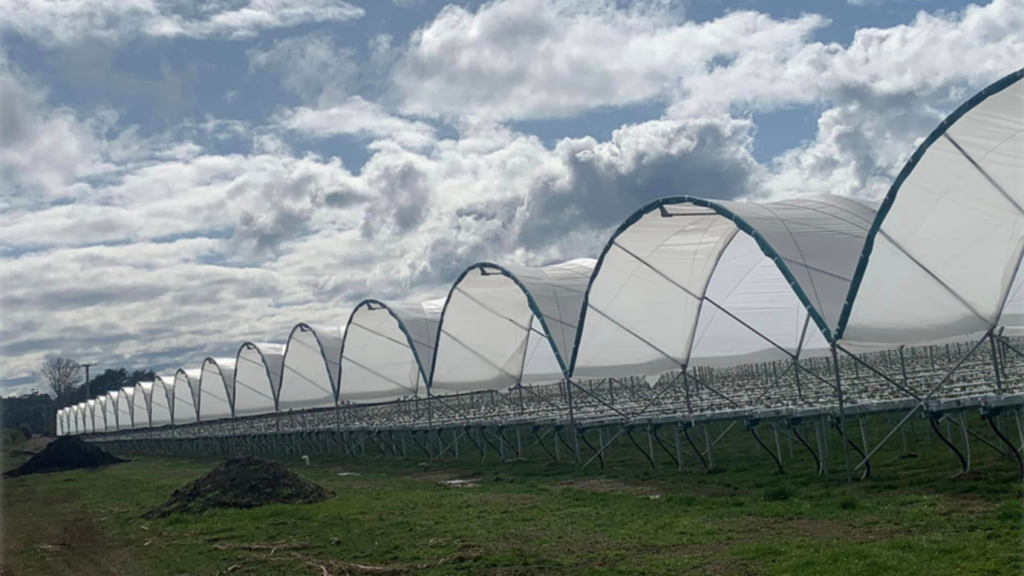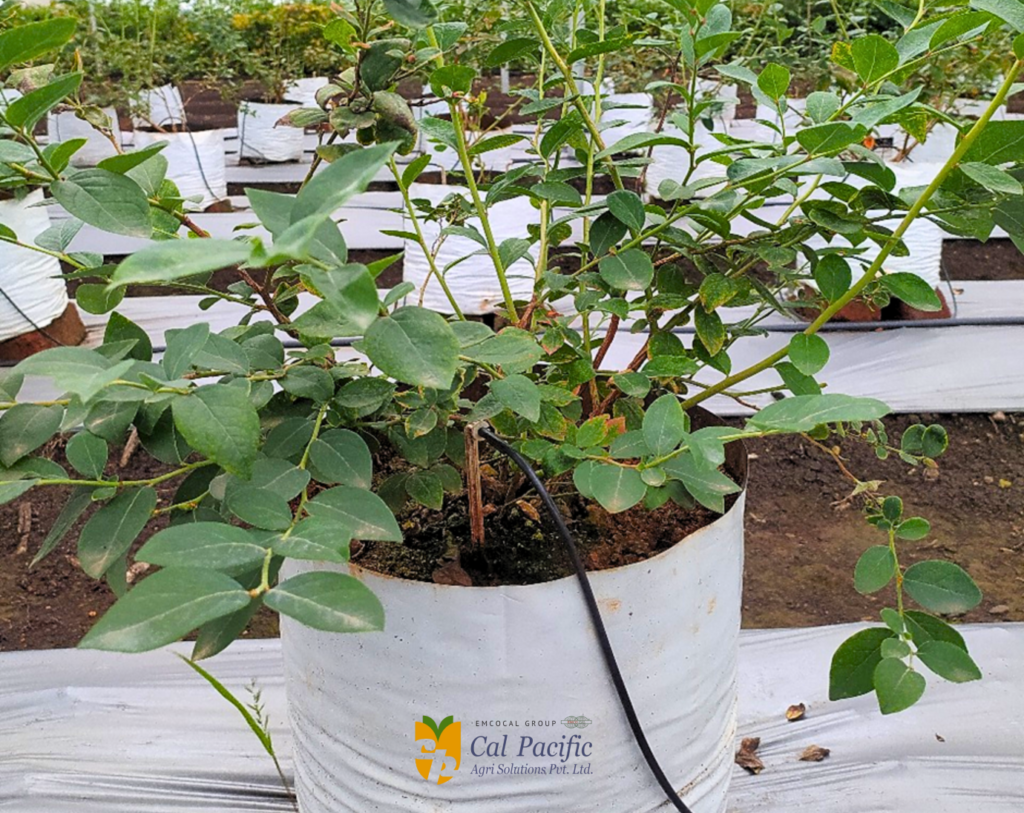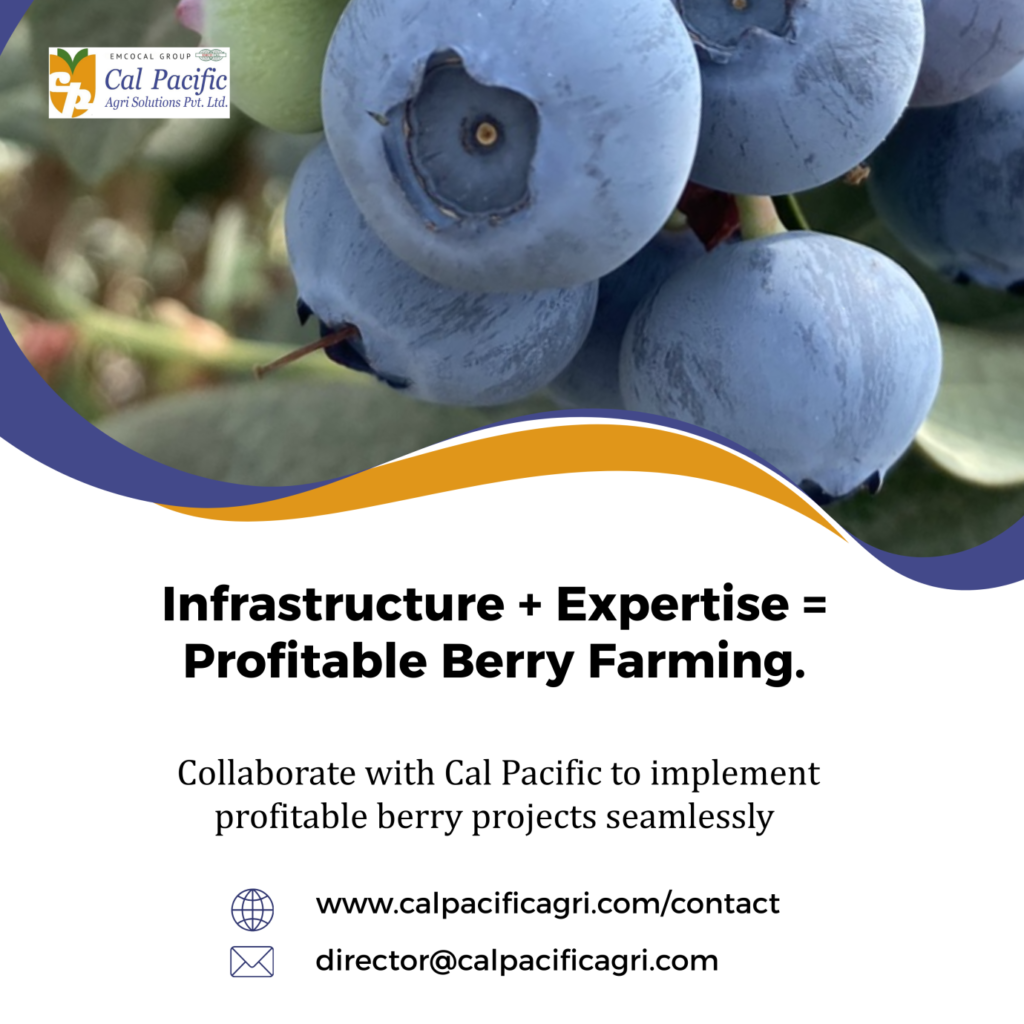
The Changing Landscape of Indian Farming
For generations, Indian farmers have relied on age-old wisdom to grow crops under unpredictable conditions—facing monsoons, soil imbalances, and persistent pests with remarkable resilience. While this traditional knowledge has carried farming through centuries, the demands of today’s markets tell a different story. High-value crops like strawberries, blueberries, and raspberries require consistency, precision, and quality standards that traditional methods alone can’t deliver.
Take blueberries, for example. These berries thrive only when they receive the right “chilling hours” and grow in acidic soils—conditions that aren’t naturally common in most parts of India. Strawberries, on the other hand, are vulnerable to pests and diseases that can wipe out entire fields. Add rising labor costs and an increasingly quality-conscious consumer base, and the gap between traditional practices and modern requirements becomes clear.
This is where technical expertise makes all the difference. It’s not just about installing polyhouses, fertigation systems, or protected cultivation structures—it’s about knowing how to manage them effectively. A polyhouse may protect plants from erratic weather, but without precise control over humidity, temperature, and fertigation schedules, results can fall short of expectations.
The real game-changer lies in pairing technology with guidance. Farmers need systems that are backed by agronomic consulting, scientific planning, and continuous support. At Cal Pacific Agri Solutions Pvt. Ltd., this philosophy drives everything we do—bringing together world-class infrastructure with expert training and long-term partnerships that ensure farmers not only adopt new tools but also achieve profitable harvests year after year.
The Knowledge Gap – Why Technology Alone Isn’t Enough
Modern agriculture is rapidly evolving. Polyhouse farming, fertigation units, and protected cultivation structures are becoming common in farms across India. Farmers are eager to experiment with high-value crops, but often face a painful truth: owning the equipment doesn’t guarantee success.
Challenges farmers face:
- A farmer may invest in a polyhouse but fail to regulate humidity and airflow, leading to fungal outbreaks.
- A fertigation system may be installed, but without precise nutrient schedules, berry plants won’t reach their potential.
- Grow bags may be introduced, but poor maintenance can reduce their efficiency.
- Varietal Selection → Farmers may choose low-chill varieties, but without training, yield and fruit quality remain inconsistent.
Closing the Gap Requires:
- Expert Agronomic Support → Tailored guidance for berry crop management.
- Crop-Specific Training → Practical knowledge on fertigation, pruning, pest control, and harvest management.
- Continuous Monitoring & Guidance → Regular check-ins to help farmers correct mistakes before they become losses.
Bridging this gap ensures that investments in infrastructure and varieties translate into higher yields, better quality fruit, and stronger profits.
Polyhouses for Berry Farming: Climate Control for Consistency
Polyhouses are not just structures—they’re productivity drivers. Built with UV-stabilized polyethylene film, they let in optimal sunlight while blocking harmful rays and protecting plants from extreme weather.
Advantages of polyhouses:
- Mitigate Climatic Risks → Shield against hail, frost, heavy rains, and high winds.
- Extend the Growing Season → Plant earlier, harvest later, and capture premium market prices.
- Pest & Disease Management → A controlled environment reduces pest entry and disease spread.
With proper training on humidity, temperature, and airflow management, polyhouses become the cornerstone of profitable berry cultivation.
Learn more about our Polyhouse Farming Solutions →
Grow Bags for Strawberries & Blueberries: Overcoming Soil Barriers
India’s native soils often lack the acidity and drainage berries need. Grow bags, filled with coco peat, solve this challenge.
Benefits include:
- Bypass Soil Limitations → Tailor pH and structure to crop requirements.
- Efficient Water & Nutrient Use → Coco peat retains moisture but prevents root rot.
- Suppress Weeds & Diseases → Cleaner medium reduces soil-borne risks.
Grow bags allow farmers across diverse regions to cultivate crops like blueberries and strawberries without worrying about unsuitable native soils.
Explore high-quality grow bags for berries →

Precision Fertigation Systems for Higher Berry Yields
Fertigation delivers nutrients directly to the root zone through irrigation, ensuring uniform and efficient feeding. Unlike broadcasting, it minimizes waste and tailors nutrition to growth stages.
Berry crop fertigation roadmap:
- Vegetative Stage → Balanced nutrients to establish roots and foliage.
- Flowering & Fruiting → Adjusted nutrient ratios for fruit size, sweetness, and flavor.
- Post-Harvest → Recovery nutrition to prepare plants for the next cycle.
Troubleshooting common fertigation issues:
- Clogging → Prevented with compatible fertilizers and flushing protocols.
- System Corrosion → Avoided with correct materials and maintenance.
- pH Management → Regular monitoring ensures plants absorb nutrients effectively.
With the right expertise, fertigation becomes a precision tool for maximizing berry yields.
See our precision fertigation systems →
Low or Zero Chill Berry Varieties: Expanding Opportunities in Indian Berry Farming
Traditionally, berry farming was restricted to regions with long winters, where crops could accumulate enough chill hours to break dormancy and set fruit. However, with the development of low-chill and zero-chill berry varieties, this barrier has been removed—making berries accessible to a much wider range of Indian farmers.
Why Low/Zero Chill Varieties Matter in India:
- Climatic Compatibility → Thrive in regions with minimal or no winter chill, including plains and subtropical zones.
- Extended Cultivation Zones → Farmers in states like Maharashtra, Karnataka, Telangana, and parts of North India can now grow berries.
- Consistent Fruiting → These varieties are bred to set flowers and fruits even without cold dormancy.
- Higher Market Access → Allows farmers to target year-round demand in metros, hotels, and export markets
Economic Impact for Indian Farmers
- Lower Entry Barriers → Even small farmers in warmer zones can try berry farming profitably.
- Premium Pricing → Berries continue to command higher prices compared to traditional fruits.
- Export Potential → Zero-chill varieties extend the harvest season, helping India compete in global markets as well as reducing dependency on imports of berries .
With low and zero chill berry varieties, Indian farmers are no longer limited by climate. Instead, they can leverage modern cultivation systems and innovative genetics to turn berries into a profitable, scalable venture.
Beyond Products – The Role of Expert Agronomic Guidance
Technical Support
- Onsite training during setup.
- Troubleshooting assistance.
- Maintenance schedules for systems.
Agronomic Support
- Crop-specific nutrient planning.
- Pest and disease management.
- Guidance on pruning, pollination, and harvesting.
📌 Ready to start your berry farming journey?
Partner with Cal Pacific for expert guidance + world-class infrastructure. Contact us today →

Conclusion – Building a Future-Ready Berry Business
The future of berry farming in India is not a far-off dream—it’s happening now. Success depends not just on technology, but on technical expertise, scientific planning, and trusted partnerships.
At Cal Pacific Agri Solutions Pvt. Ltd., we don’t just provide products—we provide pathways to profitability. With our support, farmers gain the confidence, tools, and knowledge to succeed season after season.
Secure your harvest. Secure your future. Partner with Cal Pacific today.
Get in touch with Cal Pacific Agri Solutions →
FAQs – Farmers’ Common Questions
- Do I need full automation to succeed?
No. Fully automated systems are costly and unnecessary. Our farmer-friendly solutions balance technology and affordability. - Which crops do you specialize in?
Strawberries, blueberries, and raspberries—with guidance tailored for each. - How are you different from CEA models?
We focus on knowledge-first solutions, not automation for its own sake. Our approach blends global expertise with local realities. - Do you provide post-installation support?
Yes. We partner with farmers for the long term, offering guidance every season. - Is protected cultivation affordable for small farms?
Yes. While it’s an investment, it quickly pays off by improving yields and profits. - How do I get started?
Simply contact our team for a consultation. We’ll assess your farm, recommend solutions, and provide ongoing training and support.
Also Read: Profitable Soilless Berry Farming Starts with Precision
#Farming #Strawberryultivation #BlueberryFarming #RaspberryFarming #AgronomicGuidance #Fertigation #ModernFarmingIndia #CalPacificAgri #BerryBusiness #ProtectedCultivation #SmartFarming #SustainableFarming #FarmersFirst #IndianAgriculture #BlueberryFarming #AgriTech #AgronomicGuidance #CalPacificAgri #ModernFarming #SustainableAgriculture #GrowBags #IndianFarmer
